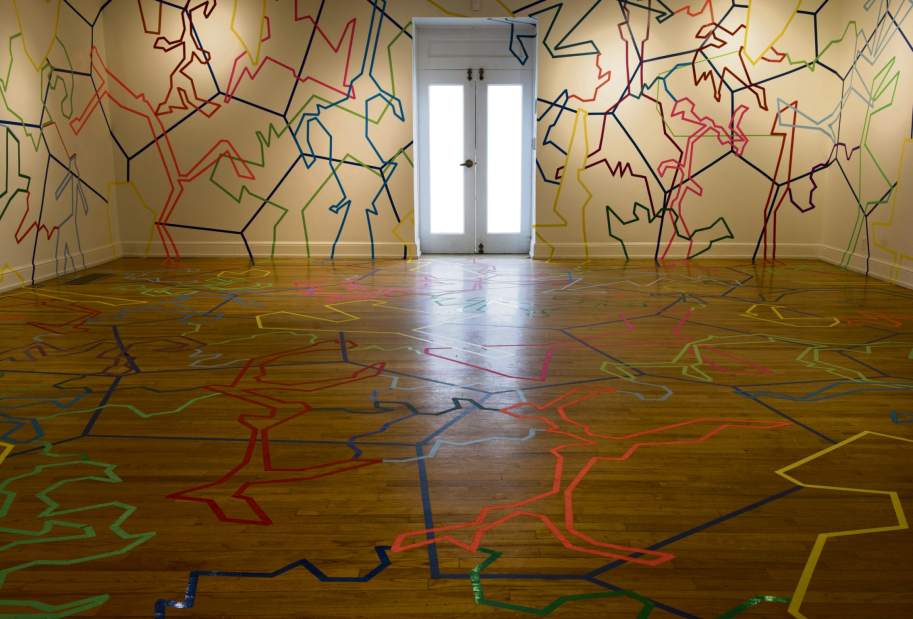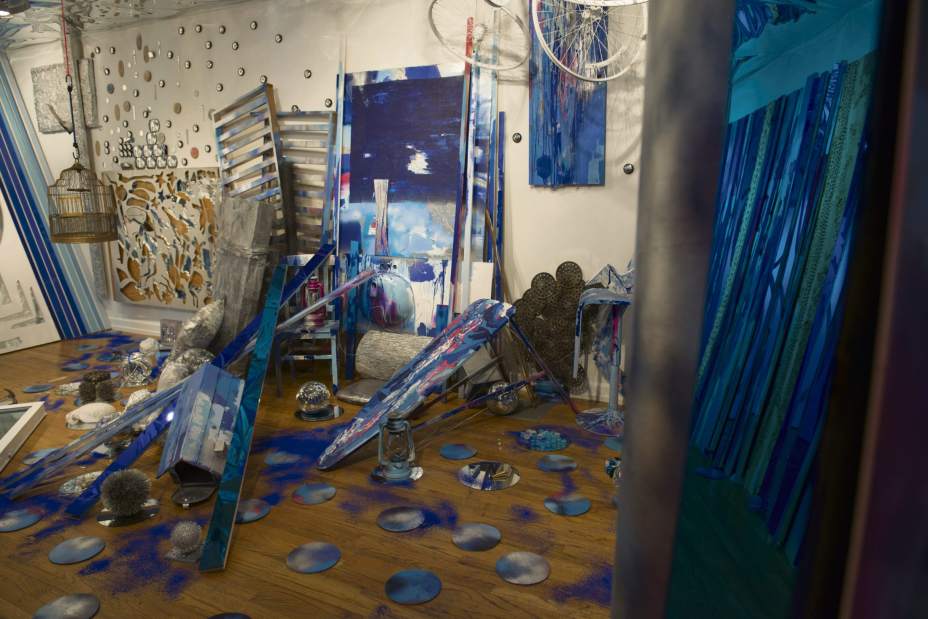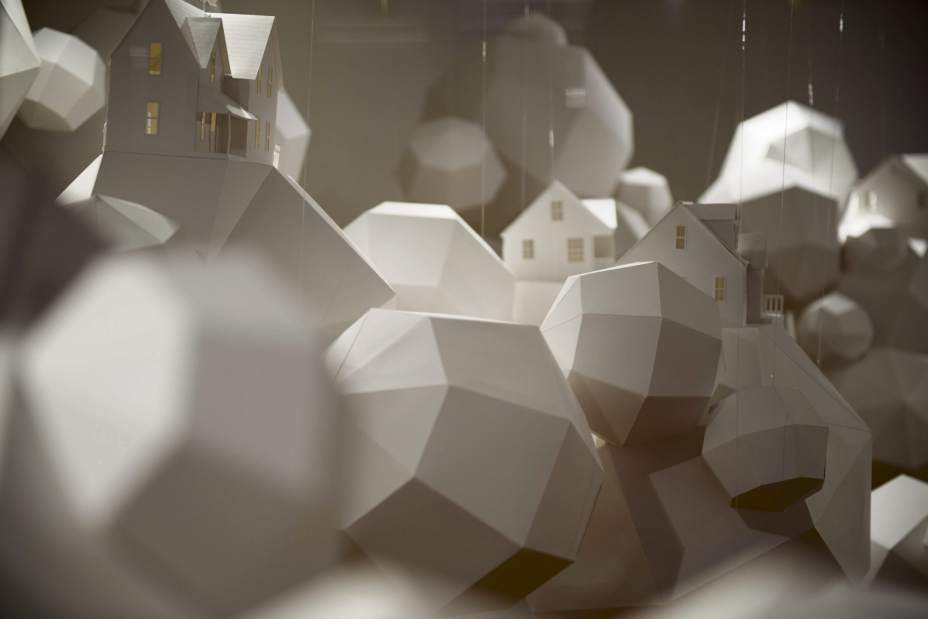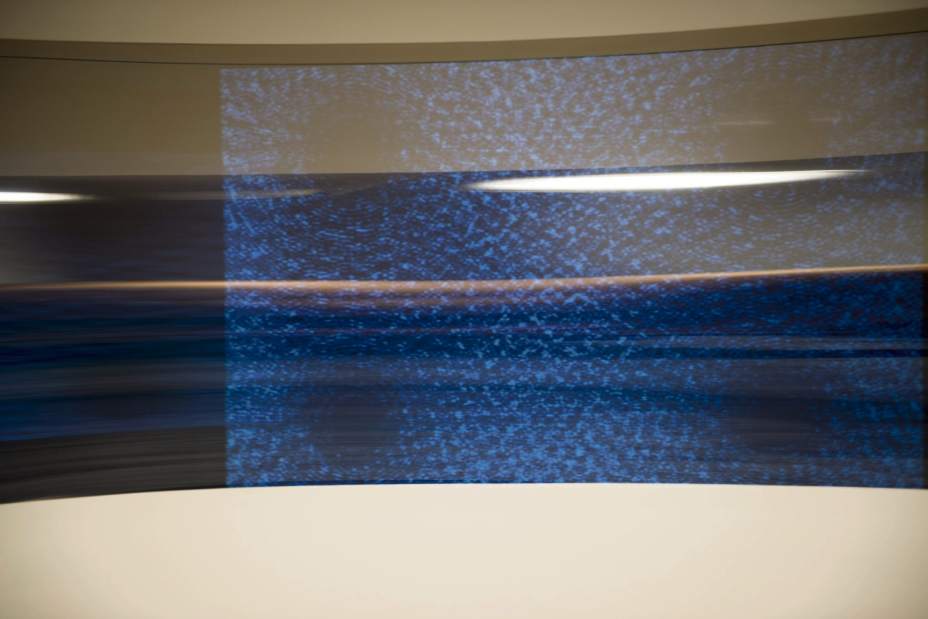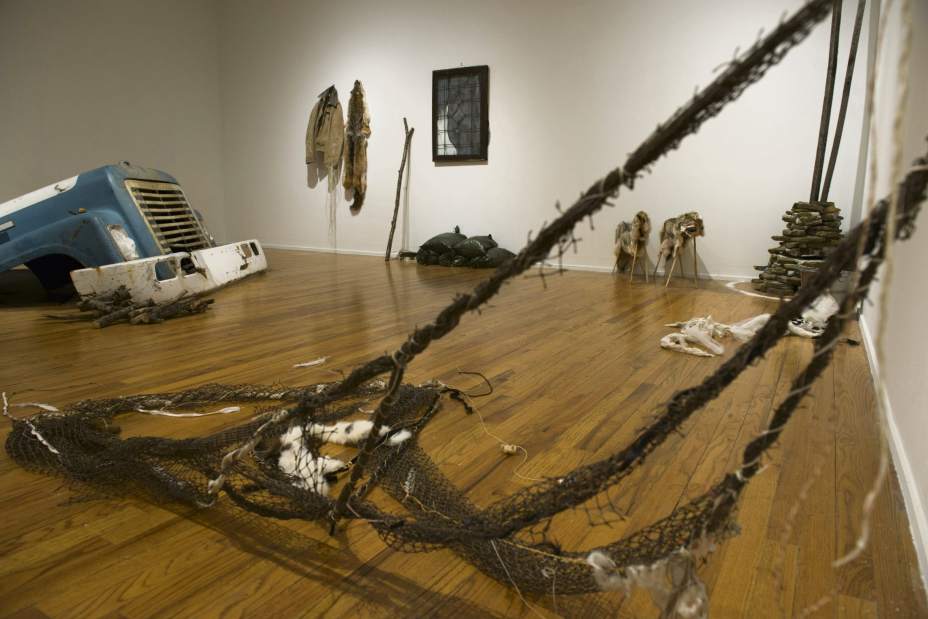Review: Color, imagination run wild at Center for the Arts
The current crop of solo and collaborative exhibits at the Pittsburgh Center for the Arts is filled with installation-type works making for a fun-house effect that is sure to please.
For example, the first room visitors will come to is literally covered floor-to-ceiling with colorful drawings. It's the work of Patrick Schmidt, a colorist in every sense of the word, who has “drawn” abstract shapes with colorful tape on the floor, ceilings and walls that engage the viewer the moment he or she walks into the space.
“I believe that color suggests an inner energy that engages all of us, young and old,” says the Mt. Lebanon-based artist.
“When installing each new drawing, I allow the architecture of the space to dictate the overall look and feel of the final drawing. So, in a sense, I am collaborating with the architecture to develop the drawing.”
Ultimately, the drawing will be taken down and, Schmidt says, never repeated. “This is a reminder of the temporal nature of all things.”
As colorful as Schmidt's installation is, India-born artist Sarika Goulatia of Squirrel Hill has him beat. Her piece — “Where is the sky?”— is a site-specific installation that responds to her mental progression through a life-threatening immune response.
After having an allergic reaction to a drug prescribed for tendonitis, Goulatia was treated with steroids. “The steroids saved my life, but my mental state went through extreme erratic shades of control, order, chaos, happiness, depression, stillness and anxiety,” Goulatia says.
Standing in the room filled with bright purple, pink, blue and black paintings, broken mirrors, tree trunks, an ironing board, bird cage — even a kitchen sink — she says, “It is basically my brain on steroids.”
“For me, an installation goes to another level,” says Goulatia, who is primarily a painter. “It doesn't bind me to a specific scale, method or medium. Depending on my concept, I can really explore where I want to go with it and how large. It allows me to occupy a space and make the whole space one, sort of like a 3-D painting, where the viewer, too, becomes a part of the work.”
Nicole Crock's installation “Dream House” is a literal play on the term “dream house.” Having created scale models of dream houses among clouds, all out of paper, she says, “I was struck with the idea that I could replicate some very real, very enviable houses out of something that we, as humans, already use to fulfill our imaginations: clouds.”
The artist, who lives in Columbus, Ohio, says she went through a nomadic period in her late teens and early 20s. “I moved 13 times in 10 years,” she says. “I'm semi-settled now, but that period of transformation ... has sparked an interest in what the idea of home and community means.”
She wanted to create a space in the gallery that would feel “weightless and dreamlike,” with paper models of houses perched throughout. “Each house has something special, some detail that's been added to separate it from its neighbors, to give the viewer something to search for and to enjoy.”
From dream to nightmare, Elise Wells' installation “Manhours” has more of a haunted house vibe than fun-house feel.
“The ‘Manhours' installation is basically my way of deciding what is significant about being either inside or outside of something ... a window, a well, a truck, a relationship ... etc.,” says the Ligonier-based artist.
Wandering through sculptural components made of disparate elements — such as windows, sandbags, truck parts and coyote pelts — can make viewers wonder whether Wells' installation is an environment where they are safe.
“I wanted people to wonder if the elements were protective or aggressive,” says Wells, and she has effectively done just that.
Finally, no fun house is complete without a fun-house mirror. John Tronsor of Garfield has provided it in the form of “Untitled (with deleuze and serres).”
A variation on past work he's done using two-way mirrors and video projection, he says, “I found that given the right conditions, it was possible to fold the image projected in the space onto the surface of the two-way mirror.”
However, in this case, the mirrored acrylic is curved, which changes the focal point of the reflection so the projected image inside the structure doesn't necessarily float on the surface of the mirror, but perceptually “floats” past it, allowing one to pass through the image in the interior of the curve.
“It's a bizarre effect and something I plan to continue experimenting with in the future,” he says.
Kurt Shaw is the Tribune-Review art critic.

